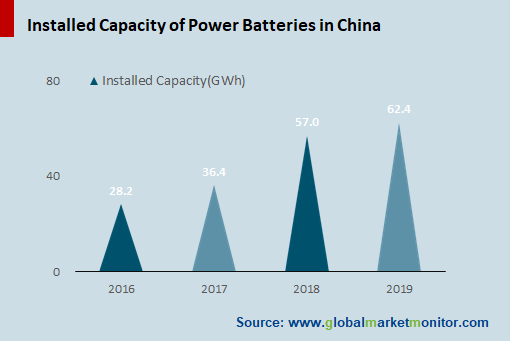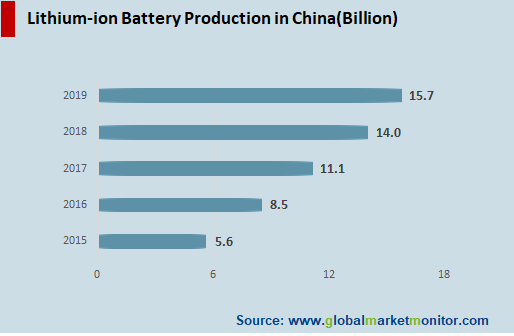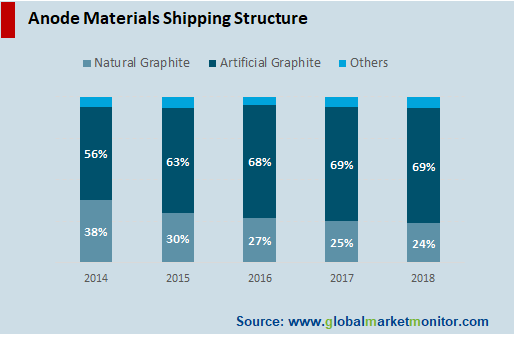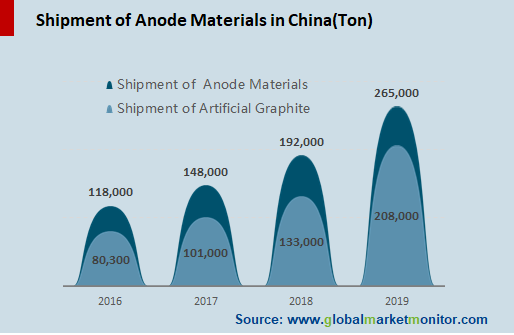From early lead-acid batteries to nickel-chromium batteries then to lithium-ion batteries, there have been many iterations for battery technology. Compared with other types of batteries, lithium-ion batteries rely on their excellent comprehensive performance to quickly penetrate almost all downstream application markets.
The main components of a lithium-ion battery include the positive electrode, the negative electrode, the electrolyte, and the separator. Among them, the cathode material accounts for about 40% of the whole cost, the electrolyte accounts for about 16%, and the separator accounts for about 21%, and the anode material accounts for 5%.
Get Your Custom Report Immediately:
https://www.globalmarketmonitor.com/request.php?type=3&rid=487775
New Energy Vehicles Are the Main Growth Point for Lithium-Ion Batteries
In the past few years, the application market of lithium-ion batteries has mainly shifted from the 3C market to power batteries. One of the most important factors is that the unit power of automotive power batteries is much higher than that of 3C electronic products. In the proportion of the cost of new energy vehicles, power battery components account for 50%.
In 2019, the installed capacity of the new energy vehicle power batteries in China was about 62,2GWh, an increase of 9.3% year-on-year. The reason why the growth rate has slowed down compared with 2018 is that production and sales of the new energy vehicle market declined.


Artificial Graphite Is the Mainstream Among Various of Anode Materials
As a small but essential part of the battery material, the anode material is a carrier in which lithium ions are inserted and embedded. For anode materials of lithium-ion battery, capacity, life, and safety are the main performance requirements that are most concerned.
At present, the anode material mainly uses composite materials such as natural graphite, artificial graphite, mesophase carbon microspheres, and silicon carbon.
In the structure of anode materials, the permeability of artificial graphite and natural graphite ranks in the top two, and artificial graphite has advantages over natural graphite.

Get Your Custom Report Immediately:
https://www.globalmarketmonitor.com/request.php?type=3&rid=538647
From the perspective of price, the price difference between natural graphite and artificial graphite is not obvious, but compared to other anode materials with a single ton of more than 100,000yuan, natural graphite and artificial graphite currently have better economic benefits and are the best choice for cost control.
From the performance index, the theoretical value of the specific capacity of artificial graphite and natural graphite is about 370mAh/g, but the cycle life of artificial graphite is about 1500 times, which has obvious advantages over other negative electrode materials.
Another, from the safe performance, natural graphite has a poor compatibility when reacting with electrolyte, resulting in an unfavorable in the process of the discharge and charge, which is not applicable for the high-end scenario. While, performance is better than that of natural graphite, with a smoother surface and more stable structure after high-temperature graphitization.
Silicon Carbon Anode Materials Have Been Used in Tesla Lithium Batteries, But Industrialization Still Takes Some Time
With the development of high-energy power batteries, it is inevitable for the development of anode materials for lithium-ion batteries in the future to find anode materials with high specific capacity, high safety, and low cost. The biggest advantage of the composite anode material fixed by silicon-carbon is that it can increase the specific capacity of the battery. The theoretical maximum specific capacity of artificial graphite is 370mAh/g, while that of the silicon-carbon composite materials can be as high as 950mAh/g. The negative electrode material of Tesla Model3 power battery began to use silicon-carbon negative electrode material, which mainly added 10% of silicon-based material to the traditional graphite negative electrode material, so that the negative electrode gram capacity reached more than 550mAh/g, and the battery energy density reached 300Wh/kg.
Although the advantages of silicon-carbon composite materials are significant, there is still a certain distance from industrialization for cost and technical issues.
At this stage, the development of new anode composite materials including silicon-carbon materials is not mature, and graphite materials are still the mainstream of anode materials.

In 2000, anode material companies in China accounted for less than 8% of the global share. With more than ten years of industry development, the anode material market share of China reached 73,4% in 2018. In the future, with the acceleration of domestic anode manufacturers' production capacity expansion, companies of China are expected to continue to increase their market share in anode materials. It is expected that the market share will increase to over 80% in the future.
From a domestic perspective, the concentration of the anode material industry is relatively high. The three major domestic giants are Btr New Material, Ningbo Shanshan, and Jiangxi Zichen. The top five leading companies accounted for 76.7% of the domestic market share in 2018. With the gradual release of the new capacity of many negative electrode material companies, the competitive landscape of the anode material market will focus on the competition among the leaders, and companies with core technology and advantageous customer channels will receive more market shares.
It is also worth noting that in 2017, Zhongke Electric acquired a 99.9% share of Shinzoom Technology, which entered the field of lithium battery anode materials. Since then, it has acquired the whole share of Guizhou Grete New Materials. Its anode material production capacity in 2018 was only 12,000 tons, mainly from Shinzoom Technology. Then the production expansion plan was launched, including the expansion of Guizhou Grete's self-funded and fund-raising expansion projects. By the end of 2020, its production capacity will reach about 42,000 tons which is expected to rank the top three in terms of the production capacity in the world.
LEARN MORE:
Lithium-ion Batteries for Automotive Market
Graphite
https://www.globalmarketmonitor.com/reports/538647-graphite-sheet-market-report.html
We provide more professional and intelligent market reports to complement your business decisions.